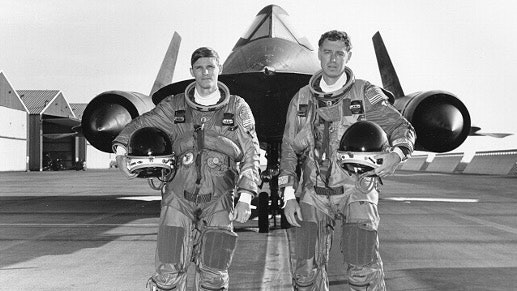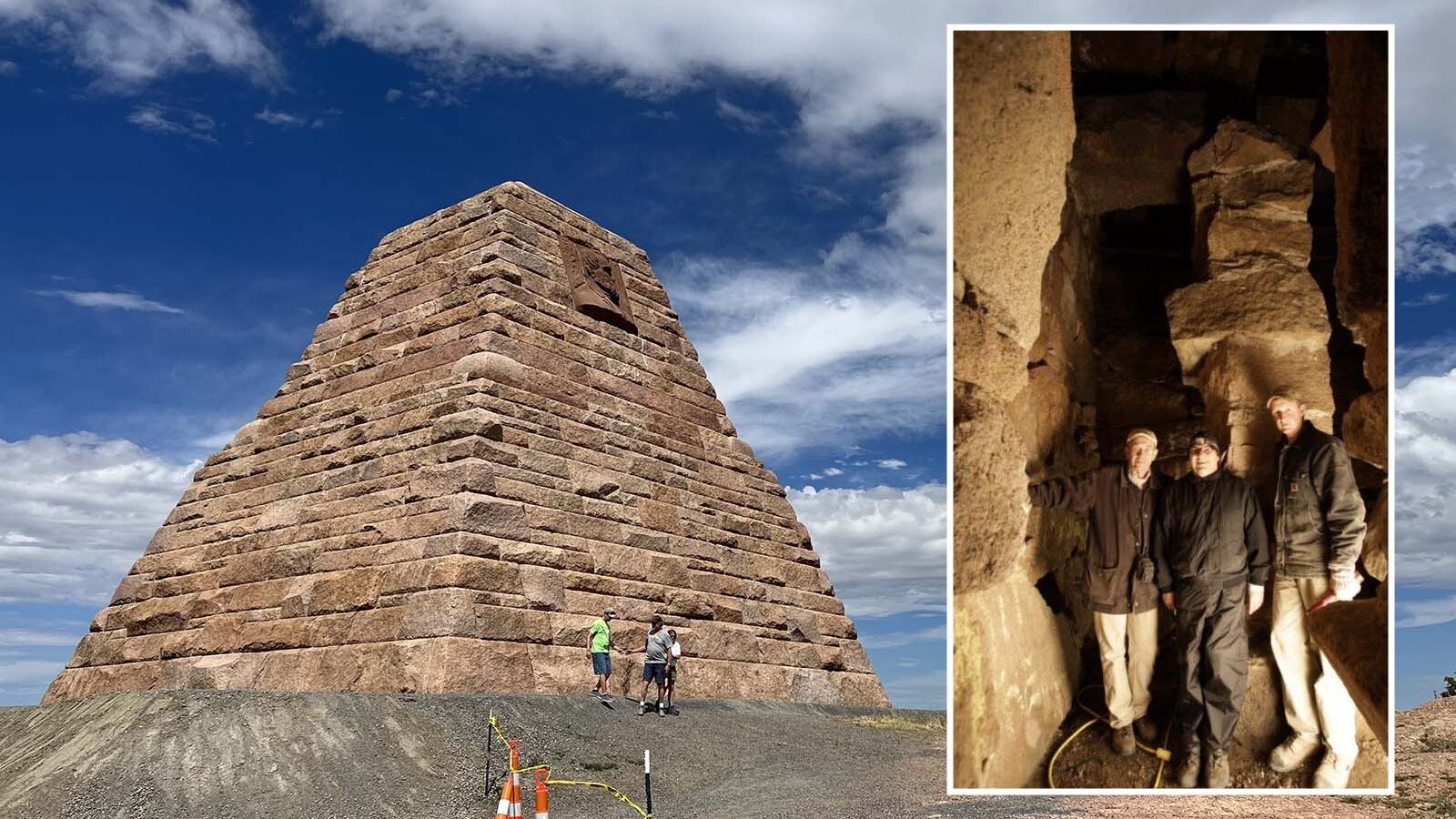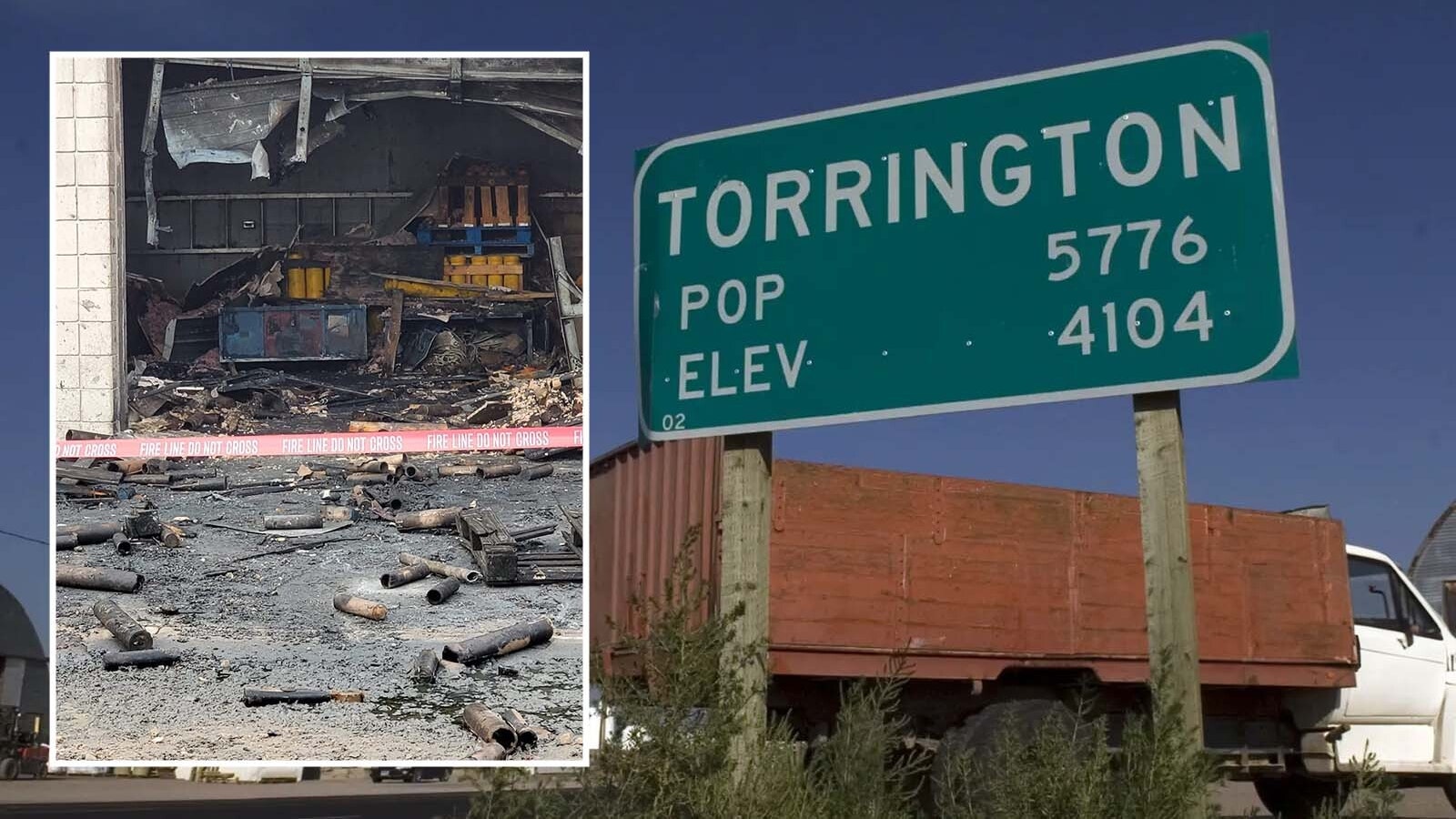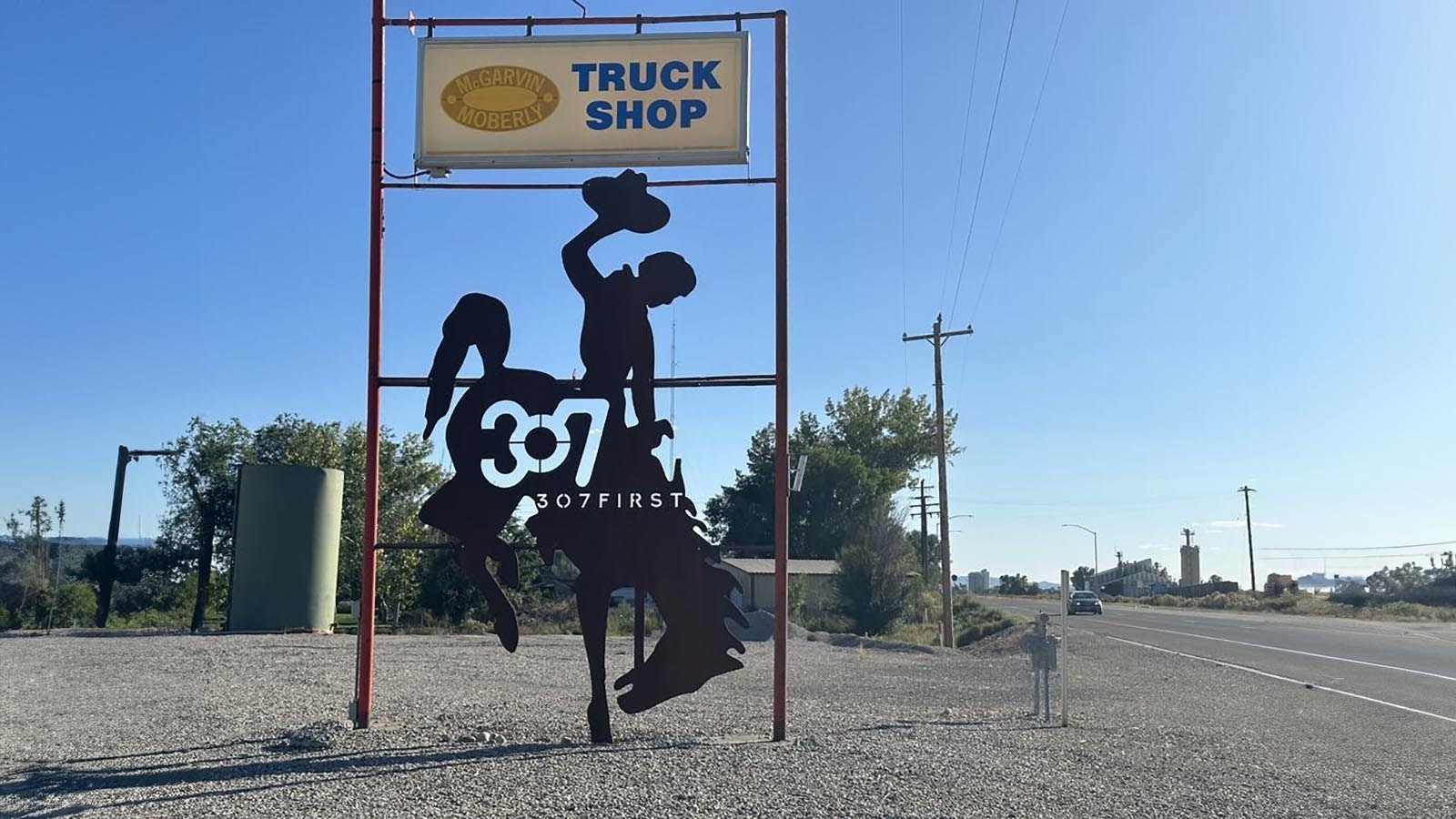By Wendy Corr, Cowboy State Daily
“The SR-71 is the fastest and highest-flying airplane in the world.”
No one knows better the thrill of flying in the Air Force’s most powerful aircraft than Ranchester resident Ted Ross. Ross was a navigator in the SR-71 program from 1982 to 1987.
Born and raised in Twin Falls, Idaho, Ross majored in mathematics at the local junior college before enlisting in the Air Force in the early 1970s. The military sent him to Fort Collins, Colorado to finish his degree.
“As I was getting ready to graduate from Fort Collins (in 1973), I took the pilot’s exam,” Ross said. “I scored really high, but I had 20/40 vision.”
Ross said the Air Force gave him another option, and it changed the course of his life.
“They said, ‘We’re not granting any medical waivers, but you can be a navigator,’” he said. “And I said, ‘What does that involve?’ And they said, ‘It involves a lot of math.’ I said, ‘Well, I have an associate degree in math. I like math.’”
Because the flight pay was the same, and he’d be in the airplane with the pilot, he didn’t hesitate.
“I said, ‘Well, what do you have to do?’ ‘Oh, well, you have to go out to Sacramento, California, and you have to go to school for a whole year.’ And I said, ‘Well, you know, I’m coming from Idaho. I hear the weather’s pretty good in California. I think you better sign me up for that right away.’”
Ross was trained as a reconnaissance systems officer, or RSO, for the SR-71 and other high-tech planes, such as the B-2 stealth bomber, the U-2, and the FB-111.
“The FB-111 is very, very similar to the F-14 that Tom Cruise was flying In the first Top Gun,” he said. “This is the one airplane that I really do miss the most.”
From the FB-111, Ross said it was an easy transition to the SR-71, part of the Blackbird family of aircraft. In 1981, Ross applied for and was accepted into the program.
“It’s a week-long – not a full astronaut physical, but way more than a normal flight- physical,” he said. “They x-rayed every joint in my entire body. There’s a psychiatrist interview to make sure your ego’s not too big, and you’re not going to do something crazy in the airplane, because these are national assets.”
The SR-71 Program
The SR-71 (the SR stands for Strategic Reconnaissance) was designed for flight at speeds of over Mach 3. The two-person flight crew consisted of the pilot in the forward cockpit, and the RSO operating the surveillance systems and equipment from the rear, as well as directing navigation.
Finished aircraft were painted a dark blue, almost black, which led to the aircraft’s nickname, “Blackbird.” Its combination of high altitude and very high speed made the aircraft almost invulnerable.
Ross explained that the SR-71 aircraft is 107 feet long and 54 feet wide, with rudders 19 feet tall.
“We carried 80,000 pounds of gas, and the airplane empty only weighed 60,000 pounds,” he said. “So it was just like a giant fuel tank with two rocket engines.”
Ross said the plane is made of 95% titanium for a specific reason.
“Titanium is like gold,” he said. “When it heats up, it purifies itself and gets stronger. So the more we flew the airplanes, the stronger they got.”
Power, Speed, Accuracy Of SR-71
Ross said the afterburners are where the Blackbird’s power really kicks in.
“At speed and altitude, both engines are doing over 2 million horsepower,” he said.
Ross said flying the SR-71 required a great deal of focus, which is why he spent hundreds of hours in the simulator before he even had his first flight.
“You really had to pay attention when you’re going 2000 miles an hour,” Ross said. “That’s a half a mile a second. So that’s basically across the whole United States in just barely over an hour, California to London in four hours, California to Japan in six hours.”


At those speeds, you’ve got to trust your pilot, said Ross.
“The reason that you always fly with the same pilot in the SR-71, is because when you’re traveling 2000 miles an hour, half a mile a second, seven and a half minutes across the state of Nebraska, you’re probably only gonna get one chance to make a decision,” he said. “So you have to do it right the first time.”
Ross said the SR-71’s navigation system had phenomenal accuracy.
“In the five years that I flew the SR-71, even 2000 miles an hour and above 80,000 feet, the most I was ever off was 162 ½ feet,” he said. “And because of that accuracy, we routinely flew the demilitarized zone between North and South Korea, which was our primary mission out of Okinawa.”
Ross said the SR-71 was the only airplane allowed to fly in the buffer zone between East and West Germany, before the countries reunited.
“I’ve seen Austria and Switzerland from 15 miles looking down,” he said, “and it’s awful, awful pretty.”


SR-71 Program Retired
Ross said the SR-71 was retired in the late 1980s, but General Norman Schwarzkopf insisted on its return, temporarily, in 1995.
He said the general was frustrated at the limited scope of other surveillance aircraft.
“He said, ‘I need to see the whole entire country, what will do that?’” Ross said. “‘Well, sir, only the SR-71 will give you 100,000 square miles an hour with the optical bar camera.’ And so against the Department of Defense wishes, he forced them to bring the SR back in 95.
But that didn’t last long.
“It was basically $6 million a year and NASA wanted to do something else with the money, so (in 1998) the SR stopped flying,” Ross said. “And they started dispersing the airplanes to museums, so they’re all on display.”
Transitioning From the SR71
When the military made the decision to reduce the SR-71 program in 1987, Ross transitioned to other high-tech aircraft programs.
“I was in the B-1 for three years, ‘87 to ‘90,” Ross said, “and during that time, I was consulting for the B-2 program because of my SR-71 experience, and being in the B-1.”
Ross was the sixth person hired to fly the B-2, which was a stealth bomber jet shaped like a jagged triangle.
“In 1990, I got orders to go to Omaha for the B-2 program as the weapons systems officer,” he said – although he never got the chance to fly in the actual stealth bomber – instead, his orders were to help re-engineer the aircraft.
“As soon as I walked in the B-2 office, they said the general wants to see you upstairs,” Ross said. “And I thought, ‘I’ve only been here like 15 minutes, how can I already be in trouble?’ And he told me, ‘Northrop Grumman has the B-2 all goofed up, and I need you to go out to Los Angeles every other week and yell at them and make it a bomber for their strategic air command.’”
In 1992, when the B2 program was moved from Omaha to Langley, Ross transitioned to the U-2 program at Beale Air Force Base.
“The U-2 is a 50s design, but it’s been continually been modernized,” he said. “And it flies every day more than it flew the day before all around the world, because they have the ability now to move the intelligence data off the airplane via satellite, bring it back, process it and send it wherever it needs to be in nanoseconds.”


Sharing His Story
Ross has kept as many mementos of his 28 years in the Air Force as he can, given the classified nature of many of his missions.
“This is the astronaut food that we ate,” he said. “In the helmet, there’s a little food port right here, and it would puncture the top of the tube and then you could eat whatever. I always carried peaches because it was the highest in sugar.”
Using books and a few models of the planes that he flew, along with a power point presentation, Ross shares his experiences with local organizations. Although he couldn’t keep what he calls his “astronaut” suit, Ross has photos and a scale model of the gear he had to wear while flying in the SR-71.
“Everybody has to have those,” he said. “And they were about $300,000 apiece.”
But he does have the helmet that he wore during his years in the SR71 program.
“My T38 SR-71 helmet is very similar to the helmet that Tom Cruise wore in Top Gun,” Ross said, “except in the latest Top Gun, he was wearing a gray helmet, and it’s lightweight. The reason I got to keep this one is because the Air Force went to those gray helmets, so I got to keep my old white helmet.”
Moving to Wyoming
Ross and his wife, Barbara, moved to Ranchester in 2018 from Beale Air Force Base in California, where the SR-71 and the U-2 airplanes are both based.
“I had been researching for about three years and Wyoming kept coming up at the top of the list,” he said. “We bought the house, and were able to move in the fall of 2018.”
In a career spanning decades, Ross said he never enjoyed a time so much as when he was a navigator in the cockpit of one of the world’s most powerful airplanes.
“We would look over at each other, and we would be grinning, and it’s like, we cannot believe they’re paying us to have this much fun,” he said. “Yeah, let’s go lower, let’s go faster.”





